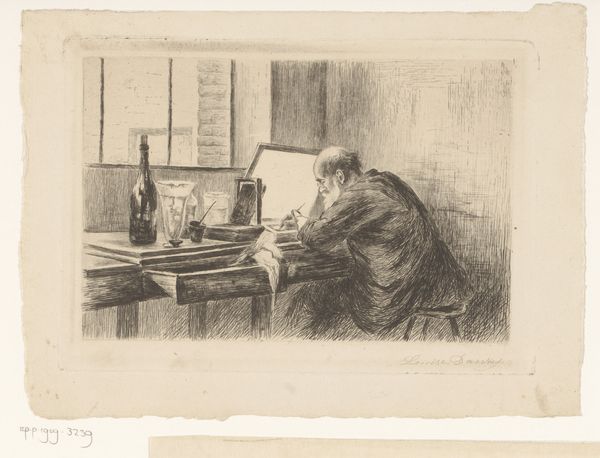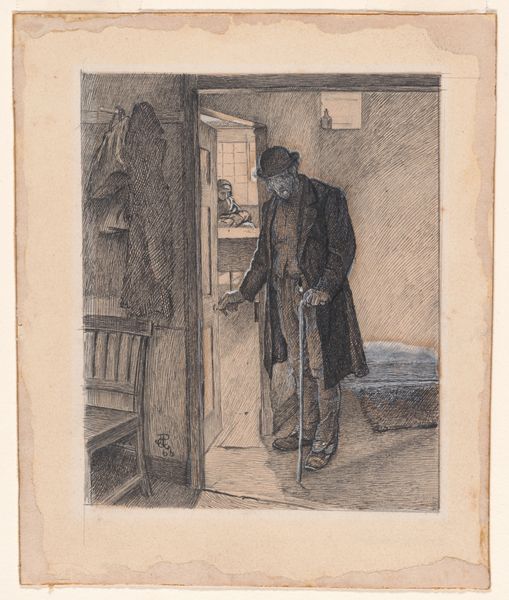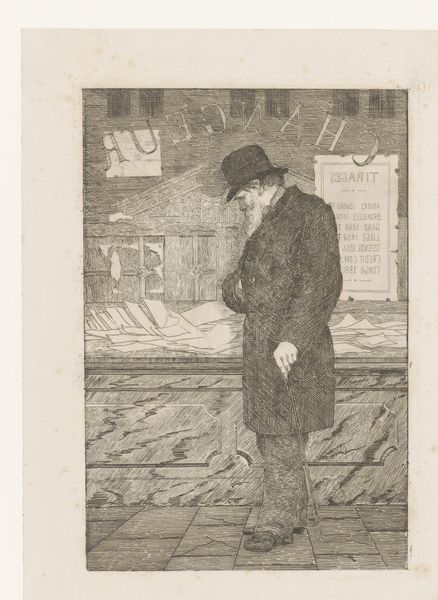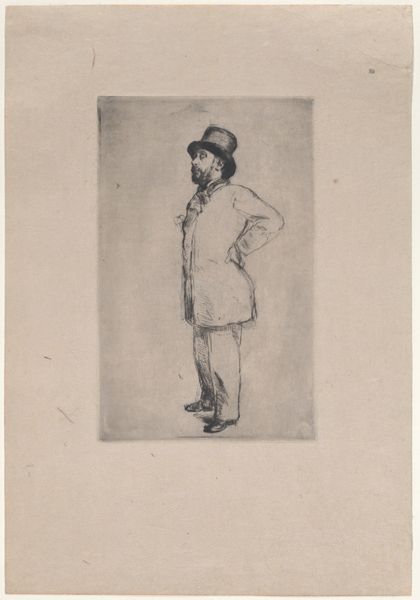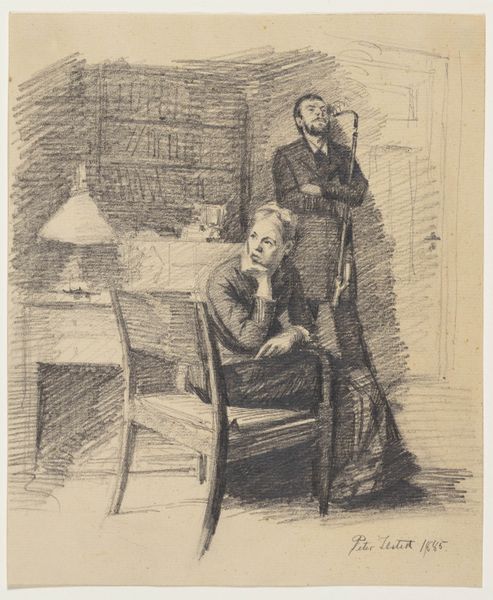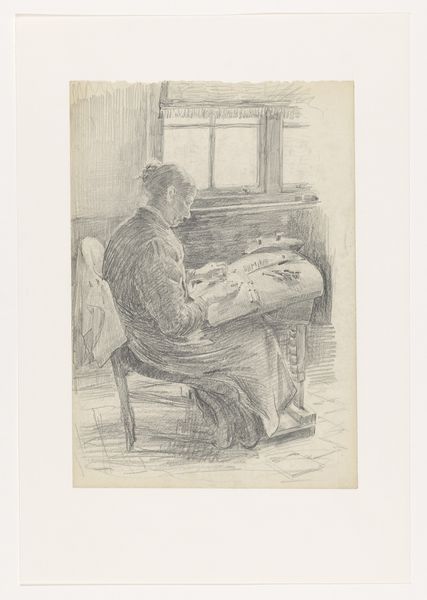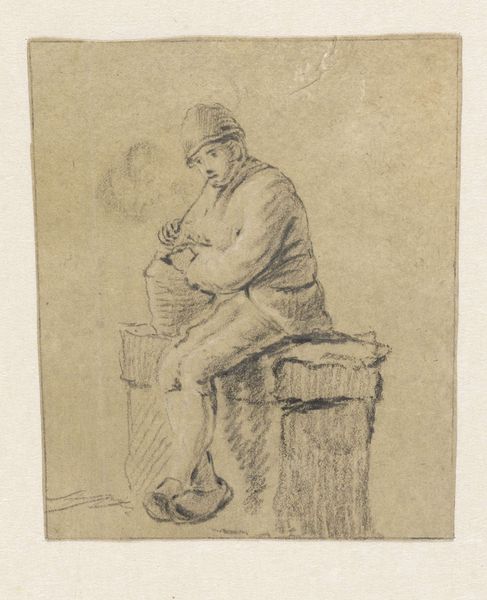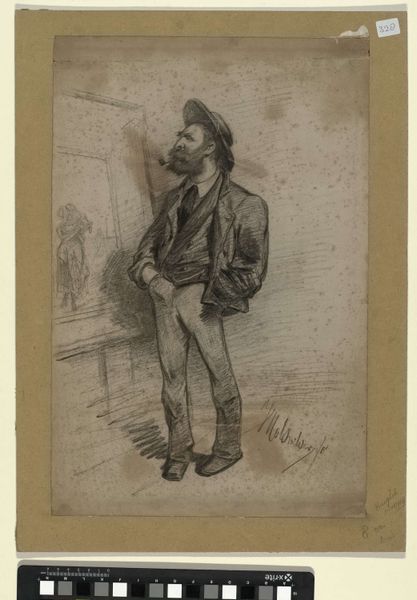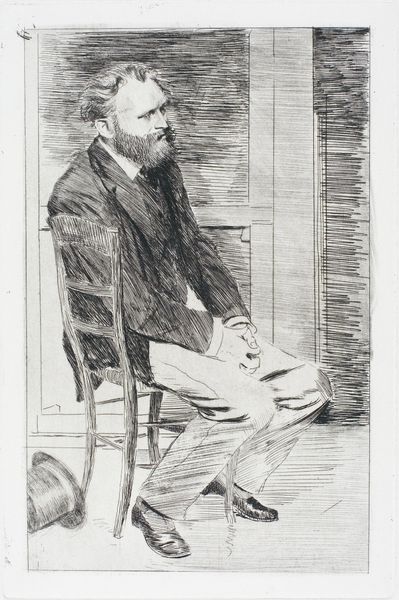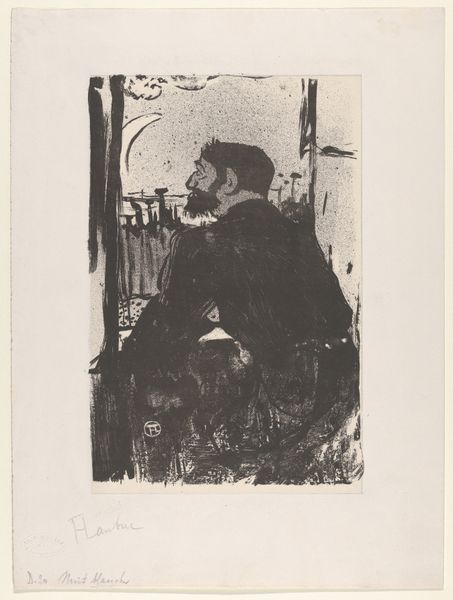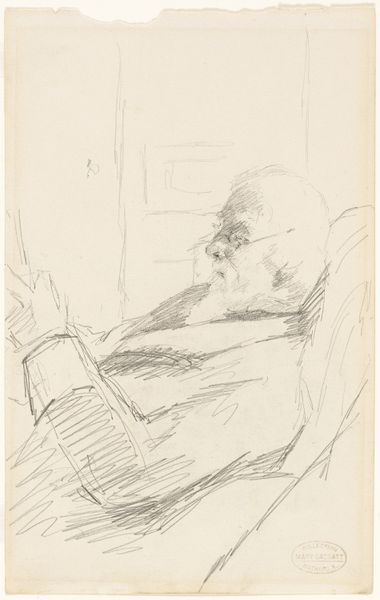
drawing, pencil
#
portrait
#
drawing
#
pencil sketch
#
pencil
#
genre-painting
#
realism
Dimensions: height 385 mm, width 280 mm
Copyright: Rijks Museum: Open Domain
Editor: Here we have "Man op stoel," created sometime between 1875 and 1900, attributed to Jan de Waardt. It's a pencil drawing, and it feels very…immediate, almost like a snapshot. What strikes you about it? Curator: I’m immediately drawn to the physical labor embedded within this "snapshot." The seemingly simple pencil strokes belie the hand of the artist – consider the physical act of mark-making, the graphite ground against the paper. What kind of pencil did de Waardt use? Where did the paper come from? These are not neutral materials. Editor: I hadn't thought of it that way, but it's true, every material tells a story. Do you think the choice of pencil and paper were deliberate statements? Curator: Absolutely. Paper wasn't always widely available. The scale suggests a specific function; perhaps a study for a larger painting or intended for personal use? We should also consider the sitter's attire. What does it tell us about his class, profession, or daily labor? Even the chair – its construction and material – reflects broader societal structures. Editor: That makes me wonder, were images like this also a commodity of some sort? Were they sold, traded, or just made for practice? Curator: A great question. The accessibility of drawing as a medium meant a proliferation of images. Understanding the market for these images, their consumption and circulation, reveals a network of social and economic relationships, influencing de Waardt and other artists during this period. Editor: I'm definitely going to look at drawings differently now, not just at the image itself, but also thinking about the context in which they were made. Thanks! Curator: And I'm reminded how essential these 'simple' works on paper are in understanding an artist's broader practice. Considering labor, material, and market transforms our understanding of art history.
Comments
No comments
Be the first to comment and join the conversation on the ultimate creative platform.
